1500 Plant journey in Haida Gwaii
Plants of Haida Gwaii: Third Edition
by Nancy J. Turner
Madeira Park: Harbour Publishing, 2021
$29.95 / 9781550179149
Reviewed by Jasḵwaan Bedard
*
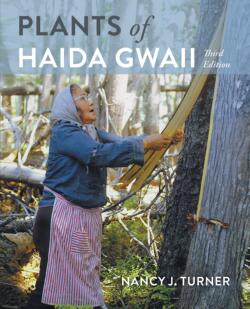 Plants of Haida Gwaii: Third Edition by Nancy Turner is a celebrated study of the Haida people’s relationship with the plants of Haida Gwaii. Dr. Turner, a renowned ethnobotanist, chronicles her extensive work collaborating with Haida knowledge holders to compile this guide to plants of Haida Gwaii. After its first two successful print runs in 2004 and 2010 by the original publisher, Sono Nis Press, their warehouse was destroyed in fire and the original manuscript of Plants of Haida Gwaii was destroyed. After being unavailable for years, Plants of Haida Gwaii Third Edition was released by Harbour Publishing in 2021.
Plants of Haida Gwaii: Third Edition by Nancy Turner is a celebrated study of the Haida people’s relationship with the plants of Haida Gwaii. Dr. Turner, a renowned ethnobotanist, chronicles her extensive work collaborating with Haida knowledge holders to compile this guide to plants of Haida Gwaii. After its first two successful print runs in 2004 and 2010 by the original publisher, Sono Nis Press, their warehouse was destroyed in fire and the original manuscript of Plants of Haida Gwaii was destroyed. After being unavailable for years, Plants of Haida Gwaii Third Edition was released by Harbour Publishing in 2021.
My interest in Plants of Haida Gwaii is multifaceted. I am Haida woman living in G̱aw Tlagée Masset, Haida Gwaii, and entrenched in Haida language revitalization — as a learner, teacher, facilitator, and community advocate. I first knew of Plants of Haida Gwaii much earlier than the 2004 first edition publication, as my late great-grandmother Sandláanee Emma Matthews was a contributor to the book, working extensively with Dr. Turner and relaying her plant knowledge in a series of interviews conducted in the 1970s. My close friend and Haida plant enthusiast Jaalen Edenshaw also collaborated with Dr. Turner about Haida plant knowledge when he was a student at the University of Victoria, and is featured in the book with our infant daughter Haana pictured with Haida tobacco that Jaalen had grown (p. 168).
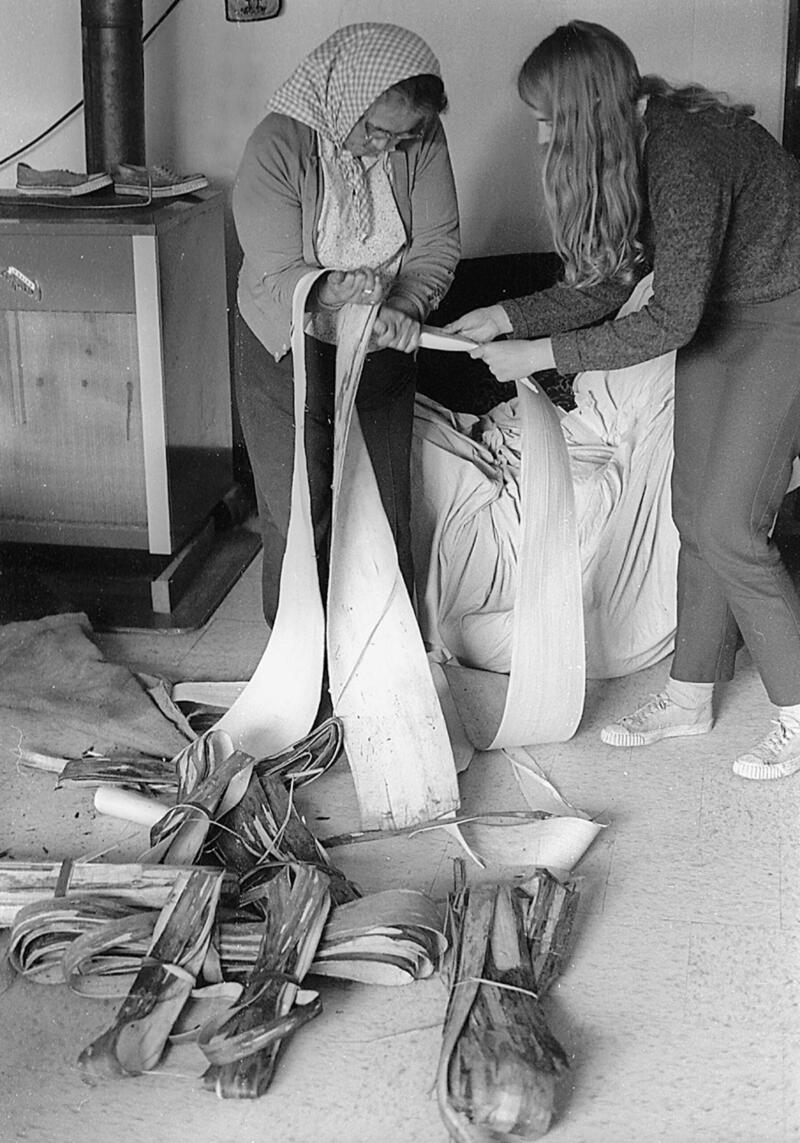
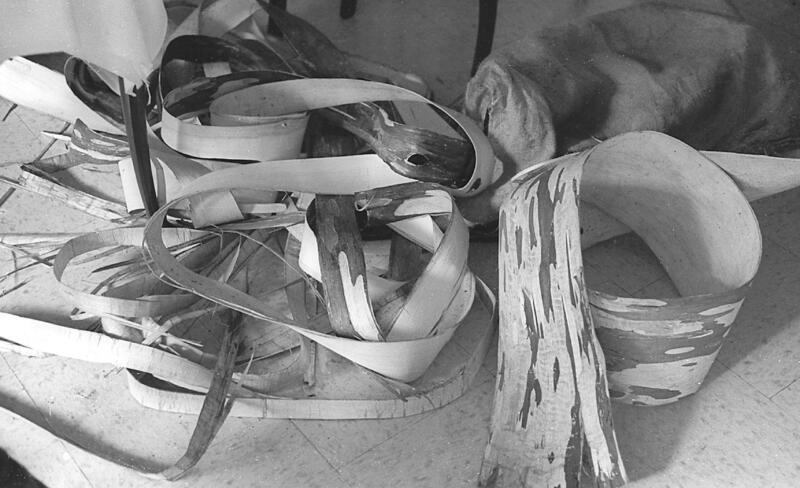
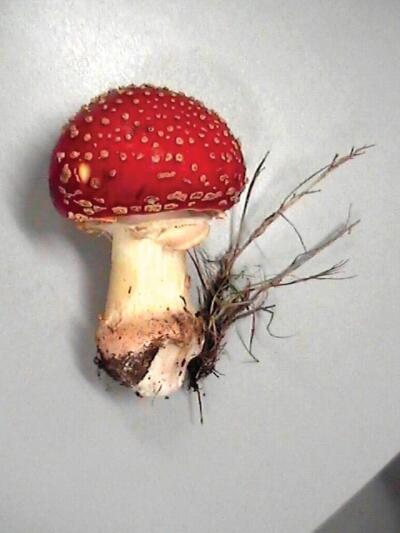
Plants of Haida Gwaii is a culmination of decades of work by Turner. In Turner’s new introduction to this third edition, she explains the journey she embarked on with the Haida community, beginning as a young doctoral student four decades ago. As a leading ethnobotanist Dr. Turner has created a roadmap of community collaboration and consultation for others in her field, showing a care that is evident in every aspect of this detailed book of Haida plant knowledge. She tells of her extensive consultation with various Haida community organizations and knowledge holders, including numerous interviews with Haida Elders and an on-going collaboration with key community leaders and organizations up until the release of the third edition.
Plants of Haida Gwaii includes all three dialects of the Haida language for every plant Dr. Turner catalogues. The Haida language is known as a “language isolate” in that there is no other language similar to it in the world; it is considered a language family unto itself. There are at this time very few fluent first language speakers left alive after the long history of violent Canadian colonial tactics to suppress and oppress Indigenous ways of knowing and being. The knowledge of plant names is a critical and important aspect of Haida culture, representing knowledge from our kuníisii ancestors dating all the way back to our supernatural times. Turner, through her wide-ranging interview and data gathering process, has consulted with the Skidegate dialect (known as X̱aayda Kil) language authority of the Skidegate Haida Immersion Program (SHIP) as well as collaboration with knowledge holder and cultural leader Kii’iljuus Barb Wilson, who authors the epilogue in Plants of Haida Gwaii titled “Conservation of Culturally Important Plants of Haida Gwaii” (pp. 215-217). As for the Old Massett and Alaskan dialects of X̱aad Kíl, Turner consults and relies on expertise of linguist Dr. John Enrico. She documents her sources of Haida knowledge through citing texts of early explorers, ethnographers, botanists, and modern-day academic authorities on all things Haida.
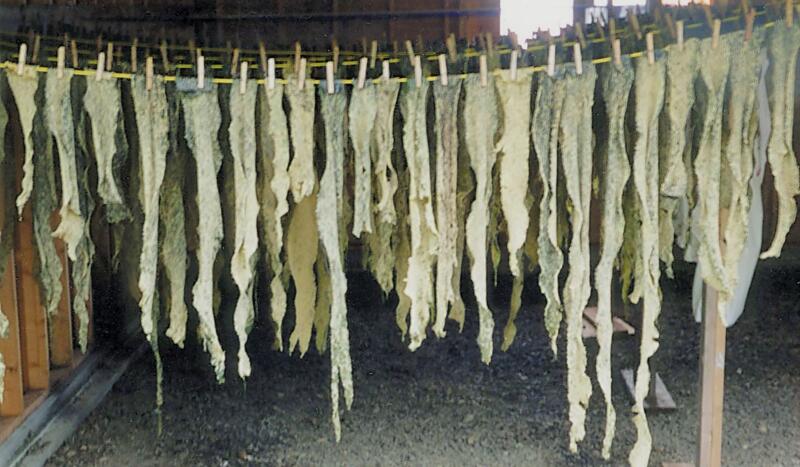
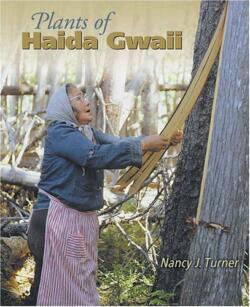
This welcome new edition of Plants of the Haida Gwaii includes a new introduction and afterword, as well as all of the original text from the first two printings. Turner follows Haida protocol by beginning her book with a prayer for Haida medicine in X̱aayda Kil by Elder, fluent speaker, and knowledge holder GwaaG̱anad, Dr. Diane Brown. Turner’s inclusion of prayer falls in line with Haida protocols of thankfulness and acknowledgement. Throughout the book Turner ensures the reader is made aware of the community and academic protocols she follows in presenting Haida knowledge about plants. Indeed, extensive footnotes and sidebars throughout this book inform the reader of source location and special notes regarding language use and Haida stories. Haida artist Giitsxaa (Gitkinjuaas Ron Wilson) lavishes readers with illustrations that pepper the book with the influence of Haida culture and worldview, coupled with Haida quotes and stories that indicate the extensive and historical relationship that the Haida people have with plants of Haida Gwaii.
It is significant that Turner provides Haida language in the three recognized dialects — Skidegate X̱aayda Kil — Old Massett X̱aad Kil — and Alaska, also X̱aad Kil, in acknowledging all of the Haida communities that would utilize her work. Plants are categorized first by their English name, then Haida name, and also their Latin scientific name. Turner explains the Haida classification system that she learned from Haida plant and language experts: trees, plants, and berries are listed with detailed descriptions of Haida cultural use of each plant. A separate section includes serious Haida-advised warnings about the improper use of potentially poisonous plants and culturally important endemic species that are suffering from over-harvesting or habitat disappearance. Indeed, Turner omits information of how to prepare or utilize Haida medicine and ensures that readers understand both the moral and physical implications of appropriation and misuse of Haida knowledge and plants.

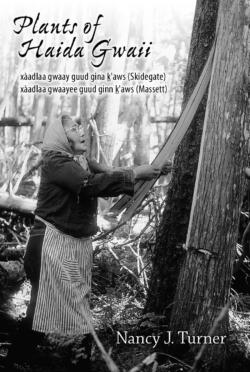
I have utilized Plants of the Haida Gwaii both in my language learning journey and while teaching Xaad Kil plant vocabulary and historical knowledge about plant use by those who came before me. Turner has presented a wealth of information as told to her by Haida Elders and knowledge keepers. She has produced a highly organized, thoughtful, and respectful resource about plants of Haida Gwaii.
However, as a Haida language activist and academic, my view has shifted since the first publication of Plants. As I come to know more of my language, I understand that Haida people view and categorize the natural world differently than English speakers. Haida organization and classification does not necessarily fit into the Western scientific methods of categorization and naming. When I reflect on the ways in which Haida knowledge is presented within Plants of Haida Gwaii, I can identify that although Turner has studiously tried to avoid this very thing, Haida knowledge is stretched and moulded into the tray of botanical categorization that rules the scientific cannon.
On my now two-decade long Haida language learning journey, I have learned the specific nature of the Haida language: where shape and function, movement and intent piece together to communicate the exact meaning of each word. Haida is a verb-based language — unlike the noun- central nature of English, which means that naming our world around us is not as important as describing what is happening. Indeed, often categorization is implied within a Haida word to describe a shape or function or an attribute of what is being named. In the case of plants, for example, words specific to a plant such as “leaf,” “branch,” “root,” or “berry” may not always be necessary to state because they are implied within the name; however, because these classifications are of great importance in the world of botany, they are always included in Turner’s plant descriptions.
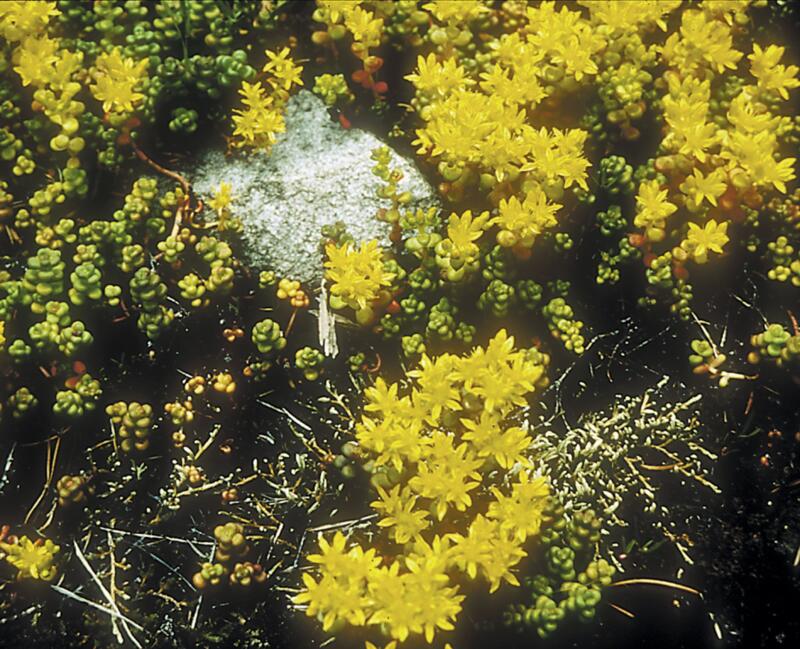
It is the case that countless scholars have entered Indigenous communities and extracted information, processed it through a scientific academic lens, categorized and analyzed that information in the same lens, and added the Indigenous cultural information and significance afterwards or within those boundaries. There is value to all of this information, and the way it has been done here by Dr. Turner is both respectful and valued within community. But as an academic with a vested interest in decolonization of language, self, and community structures, I have some independent thoughts on Plants of Haida Gwaii.
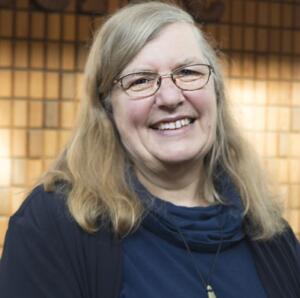
Indigenous knowledge has been cultivated for thousands of years through relationship to our lands, waters, ancestors, and supernatural beings. The trajectory of European-based Western academic study of Indigenous peoples, including the Haida, will always assume the superiority of non-Indigenous knowledge and will attempt to categorize and analyze our knowledge through a Western academic lens. Although Turner continuously defers to the Haida knowledge holders and plant experts, there are noticeable instances where non-Haida knowledge is presented as the authoritative reference. There are indeed many non-Haida who are deemed academic “experts” in Haida culture and language. In the case of X̱aad Kil the Old Massett and Alaskan dialects of the Haida language in particular, most of Turner’s references for spellings and language information are those of John Enrico. This is an area of tension, as it has been some time since Enrico has worked in collaboration with the Haida community; however, here and elsewhere, his published works are presented as the authority of the Northern Xaad Kil dialects. This gives both Haida and non-Haida readers the message that the living Haida today who work and live language revitalization are secondary to academic authorities such as Dr. Enrico. This aspect of Plants of Haida Gwaii is an indicator not of Dr. Turner’s shortcomings as a researcher or as an ally of the Haida, as she is exceptional in both roles, but of the significant amount of work that still needs to be done to decolonize the Western academy in general.
These caveats aside, Plants of Haida Gwaii is a fantastic library addition for plant enthusiasts interested in the cultural, historical, and botanical information of plants of Haida Gwaii. Nancy Turner is a leader in her commitment to learning and following Indigenous protocols in the realm of knowledge sharing and utilization — as she demonstrates so exceptionally in this work and beyond. A friend and ally of the Haida community, Dr. Turner’s work in Haida Gwaii showcases a living relationship with community and Indigenous knowledge that all in her field can learn from.
*
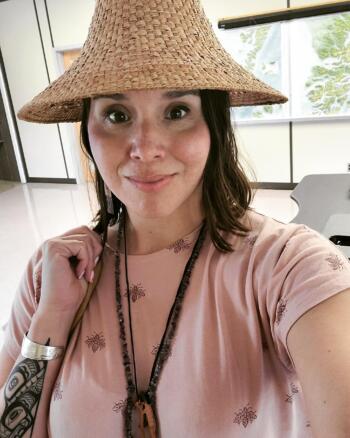
Jasḵwaan Amanda Bedard (Tsiits Gít’anee Clan, Haida Gwaii) is a mother, singer, Haida language learner, and teacher from G̱aw Tlagée (Massett Haida Gwaii). In her third year of Individualized Interdisciplinary PhD program at Simon Fraser University, Jasḵwaan aims to strengthen her Haida Language dialect of X̱aad Kil through unique programming and resource development. She is the Haida Language and Culture Curriculum Implementation Teacher for School District #50, the Team Lead for the X̱aad Kíl Née Haida Language Office, and regular course instructor for the Haida Gwaii Institute and Simon Fraser University’s Indigenous Language’s Program. Aside from her role as mother to Haana, Nora-jane, and Wiijaa, Jasḵwaan’s completion of a three- year Mentor Apprentice Program learning Xaad Kil from the late Primrose Adams has been her greatest education.
*
The British Columbia Review
Publisher and Editor: Richard Mackie
Formerly The Ormsby Review, The British Columbia Review is an on-line journal service for BC writers and readers. The Advisory Board consists of Jean Barman, Wade Davis, Robin Fisher, Cole Harris, Hugh Johnston, Kathy Mezei, Patricia Roy, Maria Tippett, and Graeme Wynn. Provincial Government Patron (since September 2018): Creative BC. Honorary Patron: Yosef Wosk. Scholarly Patron: SFU Graduate Liberal Studies.
“Only connect.” – E.M. Forster